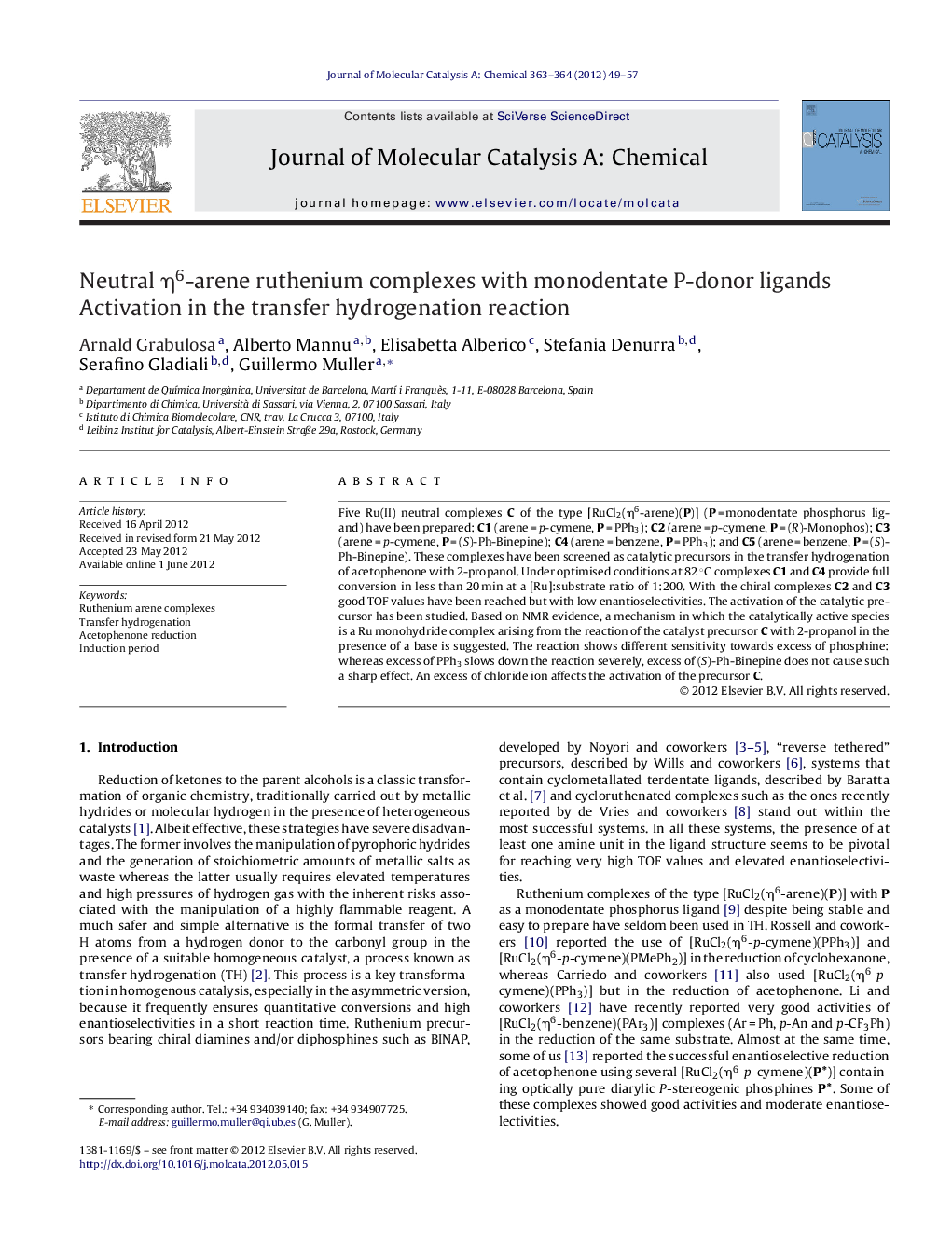| Article ID | Journal | Published Year | Pages | File Type |
|---|---|---|---|---|
| 66008 | Journal of Molecular Catalysis A: Chemical | 2012 | 9 Pages |
Five Ru(II) neutral complexes C of the type [RuCl2(η6-arene)(P)] (P = monodentate phosphorus ligand) have been prepared: C1 (arene = p-cymene, P = PPh3); C2 (arene = p-cymene, P = (R)-Monophos); C3 (arene = p-cymene, P = (S)-Ph-Binepine); C4 (arene = benzene, P = PPh3); and C5 (arene = benzene, P = (S)-Ph-Binepine). These complexes have been screened as catalytic precursors in the transfer hydrogenation of acetophenone with 2-propanol. Under optimised conditions at 82 °C complexes C1 and C4 provide full conversion in less than 20 min at a [Ru]:substrate ratio of 1:200. With the chiral complexes C2 and C3 good TOF values have been reached but with low enantioselectivities. The activation of the catalytic precursor has been studied. Based on NMR evidence, a mechanism in which the catalytically active species is a Ru monohydride complex arising from the reaction of the catalyst precursor C with 2-propanol in the presence of a base is suggested. The reaction shows different sensitivity towards excess of phosphine: whereas excess of PPh3 slows down the reaction severely, excess of (S)-Ph-Binepine does not cause such a sharp effect. An excess of chloride ion affects the activation of the precursor C.
Graphical abstractFigure optionsDownload full-size imageDownload high-quality image (115 K)Download as PowerPoint slideHighlights► Ruthenium arene monodentate phosphine precursors. ► Triphenylphosphine and (S)-Ph-Binepine ligands. ► Study of the activation of the ruthenium precursors. ► Reduction of acetophenone by hydrogen transfer reaction.
